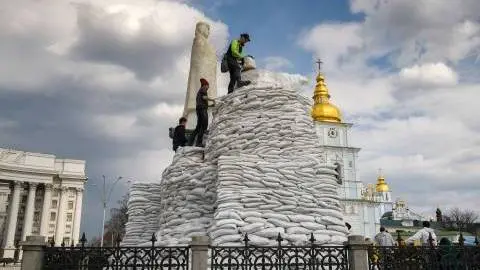Europe begins to wean itself off Russian gas
Europe has taken its first steps to reduce its dependency on Russian gas. We estimate that it can substitute 55% of it on the supply side, mostly with liquefied natural gas. On the demand side, businesses and households can reduce gas demand by 10-15% in 2022 without minimising production or comfort levels too much
Governments take first steps to reduce dependency on Russian gas
Europe’s dependency on Russian gas has been a longstanding concern. So far, contractual gas flows from Russia to Europe hold up well, even the flows through Ukraine. But Europe would face a desperate scramble to fully replace Russian gas ahead of next winter if Russian gas flows are disrupted.
REPowerEU, the European Commission’s plan to reduce its dependency on Russian gas, aims for a reduction of two-thirds this year but might put too much emphasis on renewables which are no perfect substitute for gas. Renewables are good at generating power, while gas is mostly used to generate heat or as a feedstock in manufacturing.
German politicians vowed to wean the country off Russian gas by mid-2024, and US officials said the US would deliver at least 15bcm of extra liquefied natural gas (LNG) to Europe this year, which would be a sizeable increase from the 22 billion cubic meters (bcm) exported to the EU in 2021. Although given the strength in European prices, market forces would have likely ensured that this additional volume would have come to the EU anyway. Longer-term, the EU will work toward buying an additional 50bcm of US LNG per year until at least 2030. Such a commitment should attract further investment in US LNG export capacity, given that the US is exporting near capacity already. Hydrogen is also in the picture. Germany's largest energy group EON, for example, will work in collaboration with the German and Australian governments to supply as much as five million metric tons/year of green hydrogen to the continent by 2030, which roughly corresponds to one-third of the heating energy Germany imports from Russia each year.
Only time will tell to what extent Russian gas can be reduced in 2022. We estimate that Europe will only be able to substitute around 55% of Russian pipeline flows of 155bcm of gas under a best-case scenario. Most of it, around 68bcm, comes from increased LNG levels. Increasing domestic gas production by 14bcm from Norway, the Netherlands and the UK also help, along with increased pipeline flows from non-Russian sources by 4bcm.
Europe could substitute 86bcm (55%) of Russian gas pretty soon
Alternative gas supplies to substitute for Russian gas imports in billion cubic metres (bcm)
Businesses and households are likely to save on gas too
There are plenty of gas-saving technologies that corporate decision-makers and households can implement. But only a handful of measures can significantly reduce gas demand in 2022. These are: substituting power generation from gas-fired to coal-fired power plants, lowering thermostats in buildings, and the curtailment of industrial production.
More coal-fired power production, lowering thermostats in buildings, and curtailment of production show highest potential to lower gas use
Estimate potential to lower gas use in 2022 for different sectors
By estimating the impact of these measures in different sectors on overall gas demand, we believe that corporate decision-makers and households could save 10-15% of gas in 2022. That can reach 20-30% by 2025 as they have more time to invest in gas-saving technologies.
Note that these estimates capture the potential to save energy without cutting down on production (curtailment) and without relying on reductions in comfort levels that are unrealistically high. For example, the International Energy Agency recommends adjusting home thermostats by one degree as it would help to reduce Russian gas dependency while maintaining comfort levels in houses. And public swimming pools in the city of Amsterdam will lower water temperatures by one degree next week to save gas while continuing swimming classes for children.
In reality, the current high energy prices cause energy-intensive businesses to cut production, reducing economic activity and gas demand even further (second-round effects). In the Netherlands, fertiliser producer Yara now runs its ammonia production at only 45% of production capacity, with some production sites in France and Italy already paused. Dutch aluminium smelter Aldel already announced in October 2021 that it would reduce its output by 60-70% at its Delfzijl aluminium smelter for at least six months. And Italy’s famous glassmakers are struggling to survive with current gas prices, as are many businesses in greenhouse horticulture. Clearly, we expect more curtailment announcements if gas prices continue to stay at elevated levels throughout 2022, and this would certainly lower gas demand.
Download
Download article
31 March 2022
ING Monthly: There’s nothing normal about the global economy This bundle contains {bundle_entries}{/bundle_entries} articlesThis publication has been prepared by ING solely for information purposes irrespective of a particular user's means, financial situation or investment objectives. The information does not constitute investment recommendation, and nor is it investment, legal or tax advice or an offer or solicitation to purchase or sell any financial instrument. Read more

